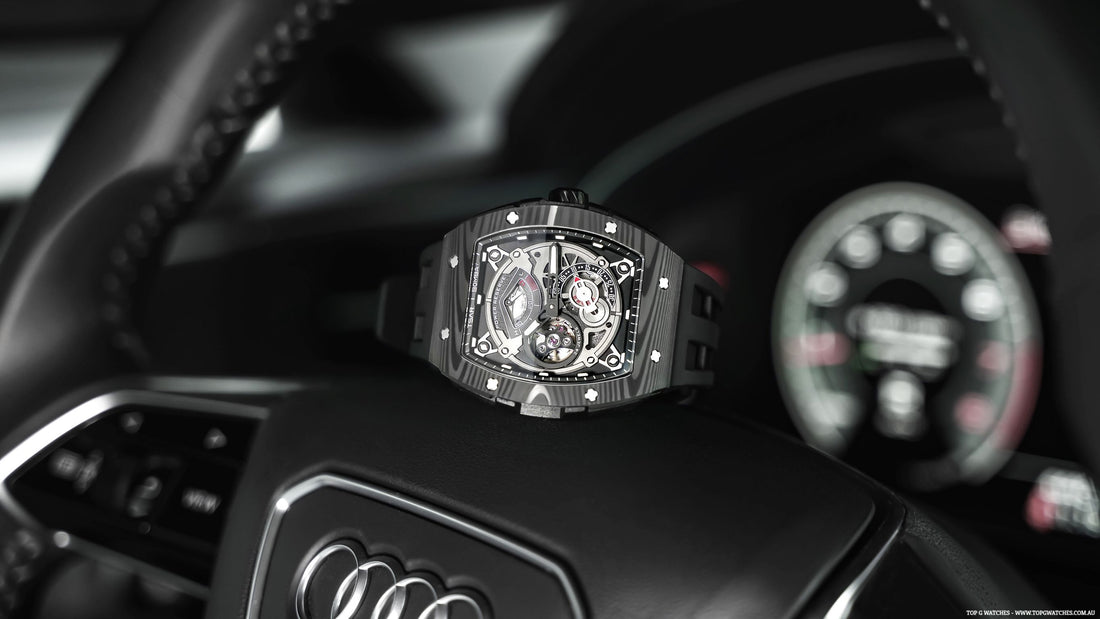
Automatic vs Mechanical Watches: What's the Difference?
What's a "Mechanical" Watch?
A mechanical watch is powered by a spring. There are two primary systems for powering watches. One is via batteries (known as quartz) and the other is via a slowly unwinding spring — that's mechanical. The tension of the spring unwinding in a controlled manner (rather than all at once) drives a series of toothed wheels which, in turn, rotate the hands around the dial.
What is an "Automatic" Watch?
An "automatic" watch is a mechanical watch that is also self-winding.
For the watch to keep functioning, the spring has to be wound. You usually can wind it manually by turning the watch's crown (the knob sticking off the side of the case), but someone came up with a very clever idea. It's called automatic winding.
Mechanical watches with automatic winding feature a rotating weight (a rotor) that pivots when the watch moves around — i.e., when you wear it and move your wrist. As it spins, it winds the spring. The term "self-winding" is anachronistic but a more descriptive term you might sometimes see for automatic winding.

What are "manual," "manually wound" or "hand-wound" watches?
These are all functionally interchangeable terms for mechanical watches without automatic winding. It's simple at the root of it, but inconsistency in terminology across watch brands can be a little confusing.
Some brands will refer to their automatic watches as "automatic" and their manually wound watches as merely "mechanical" (even though their automatic watches are also mechanical). If it doesn't say "automatic," it probably isn't, just don't forget to look closely at product descriptions and specs and make sure you know what you're getting.
What's better: Automatic watches or hand-wound watches?
It's a matter of tradeoffs. Automatic watches are convenient.
Obviously, it's nice to not worry about forgetting to keep your watch wound. If you wear a watch daily (and are more active than a sloth) it's a practical and convenient solution — but there are both pros and cons to automatic winding...
And manually wound watches have advantages too!
Manually wound watches can be thinner. The addition of a rotor to the basic movement will inevitably add some thickness — and thinner is almost always more comfortable and desirable in wristwatches.
Manually wound watches can look better. Many watchmakers like to display the movement through a caseback window so you can admire it. An automatic rotor will obstruct the view and, arguably, detract from the basic movement's visual simplicity.
Manually wound watches are often cheaper. Automatic movements are more complicated, with more components. Some companies will offer nearly identical watches in versions with and without automatic winding, and the latter will almost always be more expensive. Automatic winding itself does not, however, tend to make a watch exponentially more expensive.
Manually wound watches feel more old-school. Most modern mechanical watches are automatic. Even with the popularity of vintage reissues today, many watchmakers offer retro aesthetics but modern, convenient automatic movements inside. Some might prefer the full vintage experience if the original model didn't include an automatic winding. An Omega Speedmaster Moonwatch, for example, just wouldn't be the same as those that the astronauts used if it had automatic winding.
Additionally, some collectors actually enjoy the ritual, interaction and tactile experience of manually winding a watch.

- Top G Watches Australia Pty Ltd/ Official Tsar Bomba Agent & Retailer

